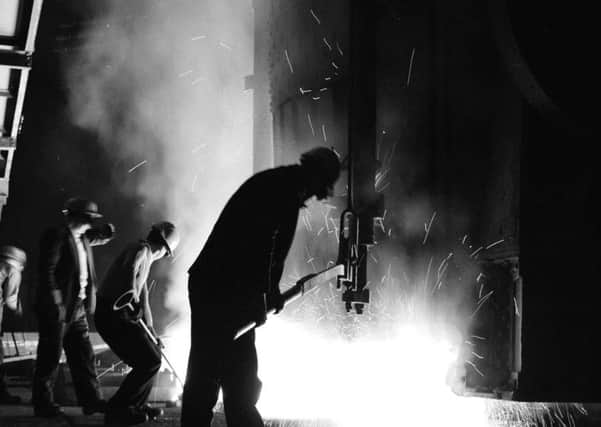Steel industry in Scotland - a short history
This article contains affiliate links. We may earn a small commission on items purchased through this article, but that does not affect our editorial judgement.


Owners David Colville and Sons rose to dominance in Scotland’s industrial landscape after they struck upon a method of mass producing steel at a cost- effective price.
Previous attempts had failed due to the high phosphor content of Scottish pig iron but the adoption of a new open- hearth method allowed the firm to successfully burn impurities and carbon out of the crude material.
Advertisement
Hide AdAdvertisement
Hide AdSteel quickly became cheaper to produce than wrought iron and demand from the Clyde’s shipbuilding industry,which by 1913 was building a quarter of the world’s ships, plus new industrial projects insured that the Dalzell furnaces fired with intensity as the 19th Century drew to a close.
The firm supplied steel for the replacement Tay Bridge and the Forth Bridge, one of the first major steel structures in the world.
Steel production in Scotland grew from 1,199 tons in 1873 to 58,500 tons in 1890.
During WW1, the Colvilles took over and enlarged Clydebridge and Glengarnock steelworks with the latter being merged with Clyde Iron Works in 1939. Its steel plates - along with those produced at Motherwell - were used to build some of the Clyde’s most famous ships - including the Lusitania and Queen Elizabeth, QE2.
The 1950s saw the beginning of major political intervention in the industry. The company was brought into public ownership in 1951 by the Labour Government and denationalised by the Conservatives four years later.
Colville’s £20m masterplan for an integrated steelworks at Ravenscraig in North Lanarkshire was completed in 1957 and supported by public subsidy.
In 1967, Colville’s was nationalised as part of British Steel Corporation - which accounted for 90 per cent of all steel produced in the UK.
Advertisement
Hide AdAdvertisement
Hide AdBSC was privatised in 1988 by Prime Minister Margaret Thatcher.
Ravenscraig, considered the finest industrial works of its kind, employed 12,000 people at its peak but closed just three years after privatisation as it rallied against a downturn in shipbuilding, high manufacturing costs and overseas competition.
It triggered a social and economic disaster for west-central Scotland - and became one of the largest derelict sites in Europe.
Last year, it looked as if steel production in Scotland could cease altogether as Tata Steel - which bought the Dalzell Motherwell and Clydebridge plants in 2007 - announced it was to mothball operations, blaming cheap imports from China and the strong pound.
With Liberty Group stepping into buy the plant, steel now rolls in Motherwell once again.
It is planned to re-start production at Clydebridge in the near future
•
DOWNLOAD THE SCOTSMAN APP ON ITUNES OR GOOGLE PLAY
